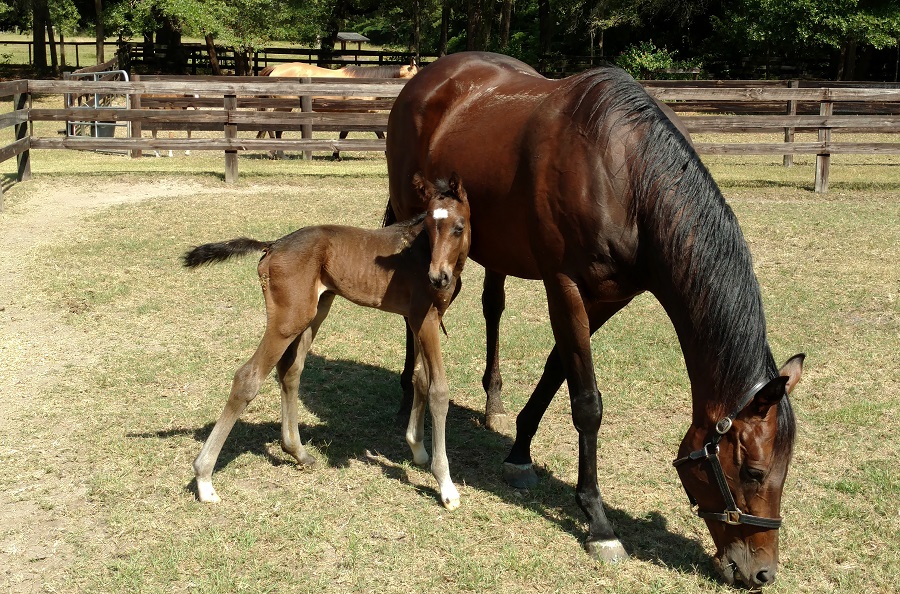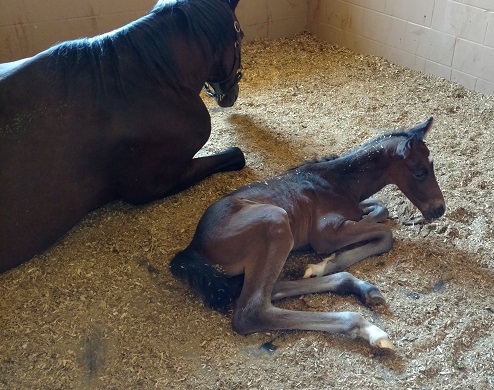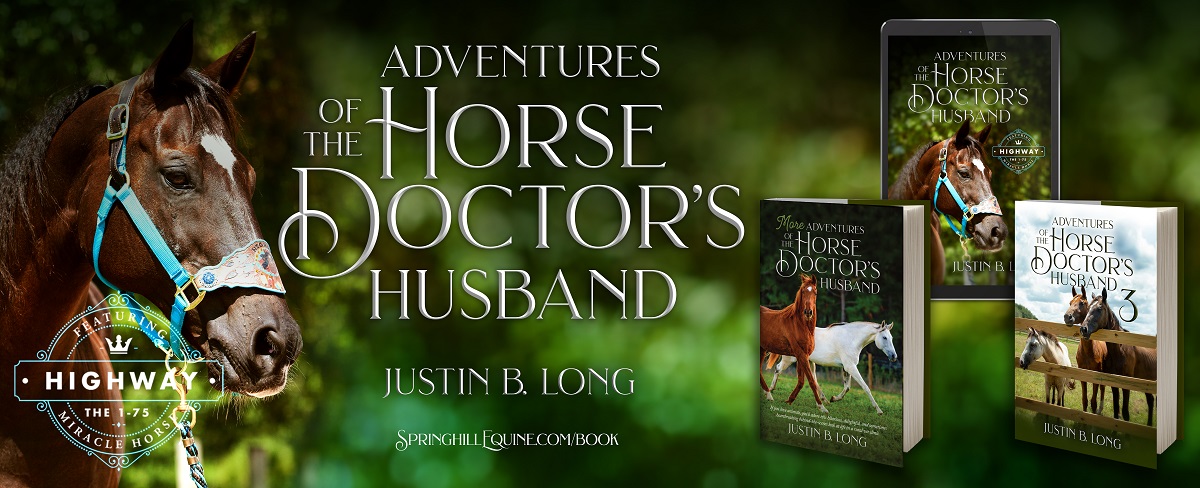Whinny’s Wisdoms

Hey everybody, Whinny here! It’s almost December, so it’s time to start thinking about breeding mares. The best plan is to avoid breeding altogether and buy a horse that’s grown up, trained, and ready to go. But for those of you who like to do things the hard, painful, expensive way (with no guaranteed outcome!), let’s get into the weeds.
The cycle of reproduction in mares is a complex process, but having an understanding of this process allows us to manipulate a mare’s reproductive cycle to increase our chances for successful breeding. In this post, we will explore the key stages of mare reproduction.
Stage 1: Estrous Cycle
The estrous cycle, also known as the “heat” cycle, is a crucial stage in mare reproduction. Unlike mice and humans, horses are seasonal breeders, and their estrous cycle is dependent on the length of daylight. Typically, the cycle occurs during the spring and summer months when the days are longer.

The estrous cycle lasts approximately 21 days, during which mares experience various behavioral and physical changes. These changes are regulated by hormonal fluctuations. As a mare enters her heat cycle, she may become more receptive to a stallion’s advances, displaying signs such as frequent urination, vocalizations, and a more relaxed stance of the tail.
Paws! Stage 1.5: Anestrous and Transitional Mares
In contrast to the estrous cycle, mares also go through periods of reproductive inactivity called anestrous. Anestrous is the phase when mares experience a temporary cessation of their estrous cycles and show no signs of heat. This usually occurs during the colder months of the year, particularly in late fall and winter when daylight hours decrease. The reduced exposure to daylight triggers hormonal changes that suppress the estrous cycle, allowing mares to conserve energy and prepare for the challenges of winter.
Additionally, mares undergo a transitional phase before entering full anestrous or during the transition from anestrous to the onset of the breeding season. This period is known as the transitional phase, or transitional estrous. During this time, mares may exhibit irregular heat cycles and display mixed behavioral and physical characteristics of both estrous and anestrous. This can make it difficult to determine the mare’s actual reproductive status and is one of the greatest challenges when breeding mares.
Stage 2: Ovulation
During the estrous cycle, the mare releases an egg from her ovaries through a process called ovulation. Ovulation usually occurs around the end of the estrous phase, approximately 24 to 48 hours before the cycle ends. If a successful mating occurs during this window, there is a higher chance of conception.
Stage 3: Fertilization
Fertilization is the process of the mare’s egg being successfully fertilized by the stallion’s sperm. The sperm can survive within the mare’s reproductive tract for several days, increasing the likelihood of fertilization if mating happens close to ovulation.
Stage 4: Pregnancy
Pregnancy is confirmed with an ultrasound at 14 days after ovulation. Horse gestation lasts approximately 11 months, although it can vary slightly depending on individual factors. During this time, the developing embryo implants itself in the mare’s uterus, where it receives nourishment and protection throughout the gestation period.
Stage 5: Parturition (Foaling)
Parturition, or foaling, in a mare unfolds in distinct stages, each essential for a successful and healthy delivery. The first stage is marked by behavioral changes, such as restlessness, pawing, and repeated lying down and getting up. This is accompanied by the relaxation of the muscles in the mare’s hindquarters.
The second stage involves the actual birthing process, where the foal is expelled from the uterus. The mare may lie down and get up repeatedly, and the amniotic sac containing the foal usually ruptures. The foal’s front feet and nose appear first, followed by its shoulders and body. The mare actively participates in this process by contracting her abdominal muscles.
The third stage involves the expulsion of the placenta, which is critical for the mare’s health. This process usually occurs within a few hours after foaling. Monitoring and assistance during these stages are crucial to ensure the well-being of both the mare and the newborn foal.

The Rest of the Story
These five stages are what happens when everything goes right. As you may know, if you’ve been a horse person for more than a few weeks, it’s unlikely that everything is going to go right with breeding. There are a variety of problems that can happen at every stage of pregnancy, and many of them stop the process. And it’s not uncommon for a mare to be bred repeatedly and still not get pregnant (just like people. Mice don’t have that problem).
There are a lot of factors that make a mare a good or bad candidate for breeding. One of the biggest ones is age. I know you humans can get confused about how old your horse is, and how that translates to human years. Let me give you a rule of thumb chart to go by:
Horse Human (equivalent age)
3 15
6 25
10 35
15 45
20 55
25 65
30 75
35 85
Horses are just like people: they are really fertile when they’re young (think 4-7), and once they get past a certain age (think 10), everything becomes high risk and high difficulty (and highly not recommended).
Our team of expert veterinarians can do a lot of things to help you set your mare up for a successful breeding. There are no guarantees in reproduction, but if you do all the things, your odds of success are greatly improved. It’s no different than anything else in life, really. The first step is talking to my docs and making a plan in December so that all the pieces can be put in the right place at the right time. You can do that with a simple call or text to the Clinic at 352-472-1620. And make sure you bring me a little bit of cheese when you come in for your pre-breeding exam!
Until next week,
~Whinny
P.S. If you’re serious about breeding your mare, you’ll want to listen to all the comprehensive breeding episodes of Straight from the Horse Doctor’s Mouth, which is the podcast my docs produce. It’s loaded with great information that you won’t want to miss out on. You can subscribe on Apple Podcasts, Spotify, or anywhere you get your podcasts, or just check them out over on the Podcast Page of my website.
 Whinny’s Wisdoms is the official blog of Whinny the Clinic Mouse at Springhill Equine Veterinary Clinic in Newberry, Florida. If you liked this blog, please subscribe below, and share it with your friends on social media! For more information, please call us at (352) 472-1620, visit our website at SpringhillEquine.com, or follow us on Facebook!
Whinny’s Wisdoms is the official blog of Whinny the Clinic Mouse at Springhill Equine Veterinary Clinic in Newberry, Florida. If you liked this blog, please subscribe below, and share it with your friends on social media! For more information, please call us at (352) 472-1620, visit our website at SpringhillEquine.com, or follow us on Facebook!
[jetpack_subscription_form title="Subscribe to Whinny's Wisdoms"]

